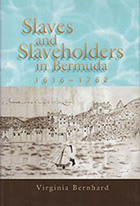
This book is the first comprehensive study of Clemens’s love affair with Bermuda, a vivid depiction of a celebrated author on recurring vacations. Donald Hoffmann has culled and clarified passages from Mark Twain’s travel pieces, letters, and unpublished autobiographical dictation—with cross-references to his fiction and infrequently cited short pieces—to create a little-known view of the author at leisure on his fantasy island.
Mark Twain in Paradise sheds light on both Clemens’s complex character and the topography and history of the islands. Hoffmann has plumbed the voluminous Mark Twain scholarship and Bermudian archives to faithfully re-create turn-of-the-century Bermuda, supplying historical and biographical background to give his narrative texture and depth. He offers insight into Bermuda’s natural environment, traditional stone houses, and romantic past, and he presents dozens of illustrations, both vintage and new, showing that much of what Mark Twain described can still be seen today.
Hoffmann also provides insight into the social circles Clemens moved in—and sometimes collected around himself. When visiting the islands, he rubbed shoulders with the likes of socialist Upton Sinclair and multimillionaire Henry H. Rogers; with Woodrow Wilson and his lover, socialite Mary Peck; as well as with the young girls to whom he enjoyed playing grandfather.
“You go to heaven if you want to,” Mark Twain wrote from Bermuda in 1910 during his long last visit. “I’d druther stay here.” And because much of what Clemens enjoyed in the islands is still available to experience today, visitors to Bermuda can now have America’s favorite author as their guide. Mark Twain in Paradise is an unexpected addition to the vast literature by and about Mark Twain and a work of travel literature unlike any other.

Slaves and Slaveholders in Bermuda, 1616-1782, offers a fresh perspective on the complex relationship between racism and slavery in the often overlooked second-oldest English colony in the New World. As the first blacks were brought onto the islands not specifically for slave labor, but for their expertise as pearl divers and cultivators of West Indies plants, Bermuda's racial history began to unfold much differently from that of the Caribbean islands or of the North American mainland.
Bermuda's history records the arrival of the first blacks, the first English law passed to control the behavior of the "Negroes," and the creation of ninety-nine-year indentures for black and Indian servants. When the inevitable reality of slavery took hold in Bermuda, slaveholders realized that they, like their slaves, were not free. Slavery dictated and strained the relationships between whites and blacks, but in this smallest of English colonies it differed from slavery elsewhere because of the uniquely close master-slave relations created by Bermuda's size and maritime economy.
At only twenty-one square miles in area, Bermuda saw slaves and slaveholders working and living closer together than in other societies. The emphasis on maritime pursuits offered slaves a degree of autonomy and a sense of identity unequaled in other English colonies. This groundbreaking history of Bermuda's slavery reveals fewer runaways, less-violent rebellions, and relatively milder punishments for offending slaves.
Bernhard delves into the origins of Bermuda's slavery, its peculiar nature, and its effects on blacks and whites. The study is based on archival research drawn from wills and inventories, laws and court cases, governors' reports and council minutes. Intended as an introduction to both the history of the islands and the rich sources for further research, this book will prove invaluable to scholars of slavery, as well as those interested in historical archaeology, anthropology, maritime history, and colonial history.

Meanwhile, the Virginia-bound Sea Venture was shipwrecked on Bermuda, the dreaded, uninhabited “Isle of Devils.” The castaways’ journals describe the hurricane at sea as well as murders and mutinies on land. Their adventures are said to have inspired Shakespeare’s The Tempest.
A year later, in 1610, the Bermuda castaways sailed to Virginia in two small ships they had built. They arrived in Jamestown to find many people in the last stages of starvation; abandoning the colony seemed their only option. Then, in what many people thought was divine providence, three English ships sailed into Chesapeake Bay. Virginia was saved, but the colony’s troubles were far from over.
Despite glowing reports from Virginia Company officials, disease, inadequate food, and fear of Indians plagued the colony. The company poured thousands of pounds sterling and hundreds of new settlers into its venture but failed to make a profit, and many of the newcomers died. Bermuda—with plenty of food, no native population, and a balmy climate—looked much more promising, and in fact, it became England’s second New World colony in 1612.
In this fascinating tale of England’s first two New World colonies, Bernhard links Virginia and Bermuda in a series of unintended consequences resulting from natural disaster, ignorance of native cultures, diplomatic intrigue, and the fateful arrival of the first Africans in both colonies. Written for general as well as academic audiences, A Tale of Two Colonies examines the existing sources on the colonies, sets them in a transatlantic context, and weighs them against circumstantial evidence.
From diplomatic correspondence and maps in the Spanish archives to recent archaeological discoveries at Jamestown, Bernhard creates an intriguing history. To weave together the stories of the two colonies, which are fraught with missing pieces, she leaves nothing unexamined: letters written in code, adventurers’ narratives, lists of Africans in Bermuda, and the minutes of committees in London. Biographical details of mariners, diplomats, spies, Indians, Africans, and English colonists also enrich the narrative. While there are common stories about both colonies, Bernhard shakes myth free from truth and illuminates what is known—as well as what we may never know—about the first English colonies in the New World.
READERS
Browse our collection.
PUBLISHERS
See BiblioVault's publisher services.
STUDENT SERVICES
Files for college accessibility offices.
UChicago Accessibility Resources
home | accessibility | search | about | contact us
BiblioVault ® 2001 - 2024
The University of Chicago Press









